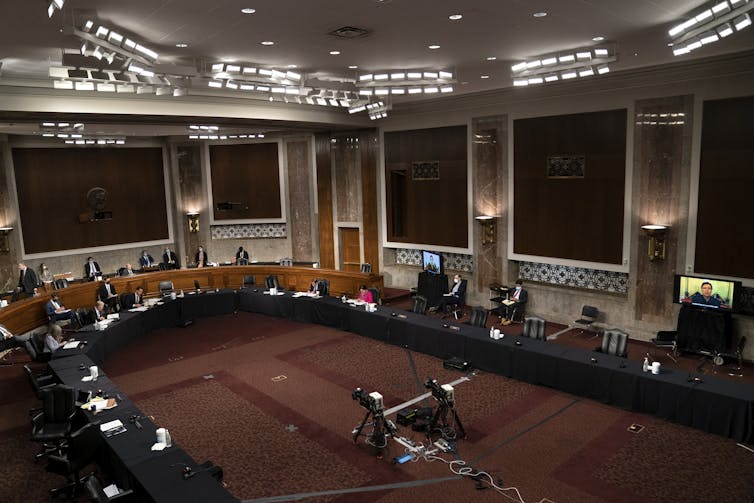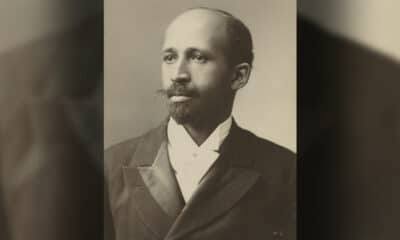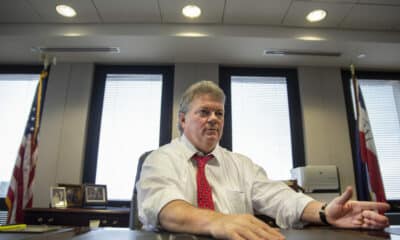
FTiare/iStock / Getty Images Plus
Lorelei Kelly, Georgetown University
On a typical day, you can’t turn on the news without hearing someone say that Congress is broken. The implication is that this dereliction explains why the institution is inert and unresponsive to the American people.
There’s one element often missing from that discussion: Congress is confounding in large part because its members can’t hear the American people, or even each other. I mean that literally. Congressional staff serve in thousands of district offices across the nation, and their communications technology doesn’t match that of most businesses and even many homes.
Members’ district offices only got connected to secure Wi-Fi internet service in 2023. Discussions among members and congressional staff were at times cut short at 40 minutes because some government workers were relying on the free version of Zoom, according to congressional testimony in March 2024.

The information systems Congress uses have existed largely unchanged for decades, while the world has experienced an information revolution, integrating smartphones and the internet into people’s daily personal and professional lives. The technologies that have transformed modern life and political campaigning are not yet available to improve the ability of members of Congress to govern once they win office.
Slow to adapt
Like many institutions, Congress resists change; only the COVID-19 pandemic pushed it to allow online hearings and bill introductions. Before 2020, whiteboards, sticky notes and interns with clipboards dominated the halls of Congress.
Electronic signatures arrived on Capitol Hill in 2021 – more than two decades after Congress passed the ESIGN Act to allow electronic signatures and records in commerce.
The nation spends about US$10 million a year on technology innovation in the House of Representatives – the institution that declares war and pays all the federal government’s bills. That’s just 1% of the amount theater fans have spent to see ‶Hamilton“ on Broadway since 2015.
It seems the story of American democracy is attractive to the public, but investing in making it work is less so for Congress itself.
The chief administrative office in Congress, a nonlegislative staff that helps run the operations of Congress, decides what types of technology can be used by members. These internal rules exist to protect Congress and national security, but that caution can also inhibit new ways to use technology to better serve the public.
Finding a happy medium between innovation and caution can result in a livelier public discourse.

Stefani Reynolds-Pool/Getty Images
A modernization effort
Congress has been working to modernize itself, including experimenting with new ways to hear local voices in their districts, including gathering constituent feedback in a standardized way that can be easily processed by computers.
The House Natural Resources Committee was also an early adopter of technology for collaborative lawmaking. In 2020, members and committee staff used a platform called Madison to collaboratively write and edit proposed environmental justice legislation with communities across the country that had been affected by pollution.
House leaders are also looking at what is called deliberative technology, which uses specially designed websites to facilitate digital participation by pairing collective human intelligence with artificial intelligence. People post their ideas online and respond to others’ posts. Then the systems can screen and summarize posts so users better understand each other’s perspectives.
These systems can even handle massive group discussions involving large numbers of people who hold a wide range of positions on a vast set of issues and interests. In general, these technologies make it easier for people to find consensus and have their voices heard by policymakers in ways the policymakers can understand and respond to.
Governments in Finland, the U.K., Canada and Brazil are already piloting deliberative technologies. In Finland, roughly one-third of young people between 12 and 17 participate in setting budget priorities for the city of Helsinki.
In May 2024, 45 U.S.-based nonprofit organizations signed a letter to Congress asking that deliberative technology platforms be included in the approved tools for civic engagement.
In the meantime, Congress is looking at ways to use artificial intelligence as part of a more integrated digital strategy based on lessons from other democratic legislatures.

Finding benefits
Modernization efforts have opened connections within Congress and with the public. For example, hearings held by video conference during the pandemic enabled witnesses to share expertise with Congress from a distance and open up a process that is notoriously unrepresentative. I was home in rural New Mexico during the pandemic and know three people who remotely testified on tribal education, methane pollution and environmental harms from abandoned oil wells.
New House Rules passed on Jan. 3, 2025, encourage the use of artificial intelligence in day-to-day operations and allow for remote witness testimony.
Other efforts that are new to Congress but long established in business and personal settings include the ability to track changes in legislation and a scheduling feature that reduces overlaps in meetings. Members are regularly scheduled to be two places at once.
Another effort in development is an internal digital staff directory that replaces expensive directories compiled by private companies assembling contact information for congressional staff.
The road ahead
In 2022, what is now called ”member-directed spending“ returned to Congress with some digital improvements. Formerly known as “earmarks,” this is the practice of allowing members of Congress to handpick specific projects in their home districts to receive federal money. Earmarks were abolished in 2011 amid concerns of abuse and opposition by fiscal hardliners. Their 2022 return and rebranding introduced publicly available project lists, ethics rules and a search engine to track the spending as efforts to provide public transparency about earmarks.
Additional reforms could make the federal government even more responsive to the American people.
Some recent improvements are already familiar. Just as customers can follow their pizza delivery from the oven to the doorstep, Congress in late 2024 created a flag-tracking app that has dramatically improved a program that allows constituents to receive a flag that has flown over the U.S. Capitol. Before, different procedures in the House and Senate caused time-consuming snags in this delivery system.
At last, the world’s most powerful legislature caught up with Pizza Hut, which rolled out this technology in 2017 to track customers’ pizzas from the store to the delivery driver to their front door.![]()
Lorelei Kelly, Research Lead, Modernizing Congress, McCourt School of Public Policy, Georgetown University
This article is republished from The Conversation under a Creative Commons license. Read the original article.


























































